Results
-
 £169.99
£169.99Olympica - Jan van der Roost
This "Grand Overture" was commissioned by the "Nagano Community Band" - Japan- on occasion of its jubilee in 1992 and is dedicated to the band's conductor, Ikuo Inagaki.The work is based upon three main themes, each symbolising a certain theme. The first part is characterized by its bright themes played mainly by the brass, accompanied by the woodwinds and festive percussion. This part symbolizes the jubilee which is the origin of the composition. This is followed by a bouncing allegro, in which each register of the band displays brilliant techniques. Especially the woodwinds come to the fore! This movement depicts the industriousness and enthousiasm shown by the members of the"Nagano Community Band" in the carrying out of their hobby. A third, main theme, is choral-like in character and is displayed both in the (soft) brass as well as in the warm medium register of the reeds. Here, nature's beaty in and around the city of Nagano is musically celebrated. Following a "chamber-music episode" (featuring the flute, oboe, clarinet, alto-saxophone and horn) the initial allegro re-occurs, weaving its way towards a grandiose finale, in which the two previous themes are once again apparent. Due to its very colourful scoring and the enormous diversity of musical thoughts and ideas, this composition is a fascinating and memorable piece, worthy a jubilee overture!
Estimated dispatch 7-14 working days
-
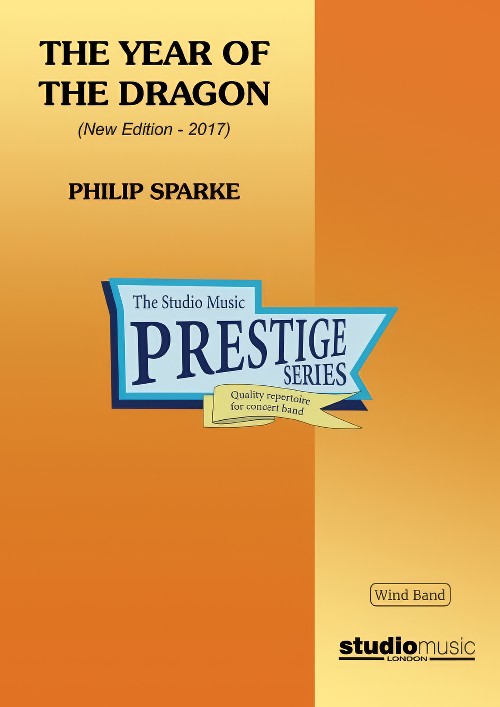 £37.95
£37.95The Year of the Dragon (Prestige Concert Band - Score only) - Sparke, Philip
The 2017 version of The Year of the Dragon was commissioned by the Siena Wind Orchestra and given its world premiere on June 17th 2017 in Bunkyo Civic Hall, Tokyo, conducted by the composer.The original wind band arrangement of The Year of the Dragon was made in 1985, a year after the composer wrote the brass band version. At that time he was still learning the intricacies of writing for wind band (and still is!) and in the 32 years which have elapsed since then, his approach to scoring for the medium has developed and, hopefully, improved.Here are the main differences between the two versions:In the 1980's, the wind band movement was much less international than it is now. British wind bands were still to some extent based on the military band tradition of the time, which tended to use rather smaller instrumentation than the then-dominant American university model. The new version embraces a much more international instrumentation, including low woodwinds and string bass, as well as an expanded percussion section.In the original version there was a touch of naivety in the way the composer wrote for the woodwinds; much of their articulation was transferred too literally from the brass version, resulting in some unidiomatic writing, which he has tried to improve in the new version.In addition to the above, Philip's own compositional style has matured and developed in the intervening 32 years. There are some passages in the original which he simply would not write today - not because they are 'wrong', but because his way of writing has changed. The new version is perhaps how he would have written it today, rather than simply dressing the original version in new clothes.The work is in three movements:Toccata opens with an arresting side drum figure and snatches of themes from various sections of the band, which try to develop until a broad and powerful theme from the middle of the band asserts itself. A central dance-like section soon gives way to the return of this theme, which subsides until faint echoes of the opening material fade to a close.Interlude takes the form of a sad and languid solo for alto saxophone. A chorale for the whole band introduces a brief spell of optimism but the saxophone solo returns to close the movement quietly.Finale is a real tour-de-force for the band with a stream of rapid semi-quavers running throughout the movement. The main theme is heroic and march-like but this is interspersed with lighter, more playful episodes. A distant fanfare to the sound of bells is introduced and this eventually returns to bring the work to a stirring close.
Estimated dispatch 7-14 working days
-
 £199.95
£199.95The Year of the Dragon (Prestige Concert Band - Score and Parts) - Sparke, Philip
The 2017 version of The Year of the Dragon was commissioned by the Siena Wind Orchestra and given its world premiere on June 17th 2017 in Bunkyo Civic Hall, Tokyo, conducted by the composer.The original wind band arrangement of The Year of the Dragon was made in 1985, a year after the composer wrote the brass band version. At that time he was still learning the intricacies of writing for wind band (and still is!) and in the 32 years which have elapsed since then, his approach to scoring for the medium has developed and, hopefully, improved.Here are the main differences between the two versions:In the 1980's, the wind band movement was much less international than it is now. British wind bands were still to some extent based on the military band tradition of the time, which tended to use rather smaller instrumentation than the then-dominant American university model. The new version embraces a much more international instrumentation, including low woodwinds and string bass, as well as an expanded percussion section.In the original version there was a touch of naivety in the way the composer wrote for the woodwinds; much of their articulation was transferred too literally from the brass version, resulting in some unidiomatic writing, which he has tried to improve in the new version.In addition to the above, Philip's own compositional style has matured and developed in the intervening 32 years. There are some passages in the original which he simply would not write today - not because they are 'wrong', but because his way of writing has changed. The new version is perhaps how he would have written it today, rather than simply dressing the original version in new clothes.The work is in three movements:Toccata opens with an arresting side drum figure and snatches of themes from various sections of the band, which try to develop until a broad and powerful theme from the middle of the band asserts itself. A central dance-like section soon gives way to the return of this theme, which subsides until faint echoes of the opening material fade to a close.Interlude takes the form of a sad and languid solo for alto saxophone. A chorale for the whole band introduces a brief spell of optimism but the saxophone solo returns to close the movement quietly.Finale is a real tour-de-force for the band with a stream of rapid semi-quavers running throughout the movement. The main theme is heroic and march-like but this is interspersed with lighter, more playful episodes. A distant fanfare to the sound of bells is introduced and this eventually returns to bring the work to a stirring close.
Estimated dispatch 7-14 working days
-
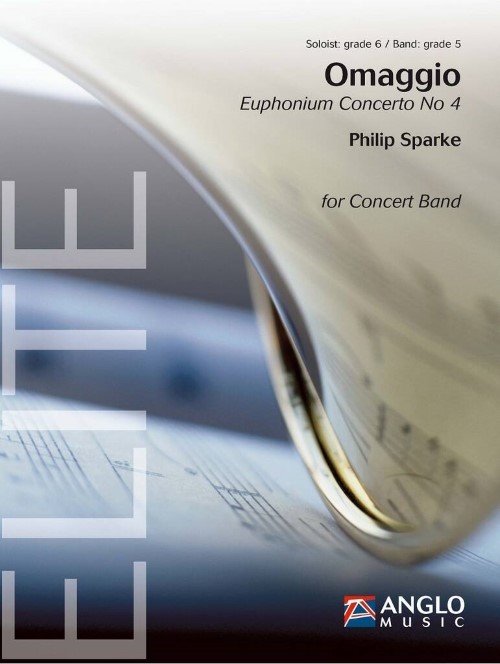 £206.99
£206.99Omaggio (Euphonium Concerto No.4) (Euphonium Solo with Concert Band - Score and Parts) - Sparke, Philip
Omaggio was commissioned by Steven Mead in celebration of his 60th birthday and in memory of his father, Rex. He gave the premiere of the brass band version in Rome in March 2022, accompanied by the Italian Brass Band conducted by Filippo Cangiamilla. The concert band premiere took place on 6th July that year as part of the 2022 Spanish International Tuba Euphonium Conference, accompanied by the Banda municipal de msica de Malaga.The concerto is set in 3 continuous movements, which are united by a recurring syncopated interval of a fifth. The first movement, Fantasia, opens with this motive accompanying an extended monologue for the soloist. This is followed by a lengthy bridge passage by the band, which is eventually joined by the soloist, who guides the music back to the opening soliloquy, leading to an energetic central section. This develops until the opening material again returns to introduce the second movement, Ballad, which revolves around an expressive melody for the soloist, interspersed by accompanied cadenzas. The third movement, The King Triumphant, pays homage to Steven's late father, Rex, and its title alludes both to Rex's name (Rex being Latin for king) as well as his love of Eric Ball's Salvationist masterpiece, The Kingdom Triumphant. The finale is an energetic tour-de-force featuring an acrobatic 6/8 melody, which is interrupted twice by the magnificent hymn tune, Helmsley, which Ball uses so effectively in The Kingdom Triumphant. A galloping coda brings the work to a close.
Estimated dispatch 7-14 working days
-
 £206.99
£206.99Omaggio - Philip Sparke
Omaggio was commissioned by Steven Mead in celebration of his 60th birthday and in memory of his father, Rex. He gave the premiere of the brass band version in Rome in March 2022, accompanied by the Italian Brass Band conducted by Filippo Cangiamilla. The concert band premiere took place on 6th July that year as part of the 2022 Spanish International Tuba Euphonium Conference, accompanied by the Banda municipal de msica de Mlaga. The concerto is set in 3 continuous movements, which are united by a recurring syncopated interval of a fifth. The first movement, FANTASIA, opens with this motive accompanying an extended monologue for the soloist. This is followed by a lengthy bridge passage by the band (piano), which is eventually joined by the soloist, who guides the music back to the opening soliloquy, leading to an energetic central section. This develops until the opening material again returns to introduce the second movement, BALLAD, which revolves around an expressive melody for the soloist, interspersed by accompanied cadenzas. The third movement, THE KING TRIUMPHANT, pays homage to Steven's late father, Rex, and its title alludes both to Rex's name ('Rex' being Latin for 'king') as well as his love of Eric Ball's Salvationist masterpiece, The Kingdom Triumphant. The finale is an energetic tour-de-force featuring an acrobatic 6/8 melody, which is interrupted twice by the magnificent hymn tune, Helmsley, which Ball uses so effectively in The Kingdom Triumphant. A galloping coda brings the work to a close.
Estimated dispatch 7-14 working days
-
 £156.99
£156.99Shaker Suite
Legendary composer, arranger, and author Rayburn Wright is responsible for initiating the storied jazz program at the Eastman School of Music, and was also a composer for film and television. His masterful setting of Shakermelodies includes the familiar Simple Gifts, along with The Happy Journey and I've Set My Face for Zion's Kingdom. Used to feature a separate brass quintet or with members within an ensemble's brass section, this is truly amemorable setting adapted by current Eastman Wind Ensemble conductor Mark Davis Scatterday. Dur: 9:50 (Grade 5) Audio recorded by the Canadian Brass and the Eastman Wind Ensemble on Manhattan Music (OD 7368) - Mark DavisScatterday, conductor Dur: 9:50
Estimated dispatch 7-14 working days
-
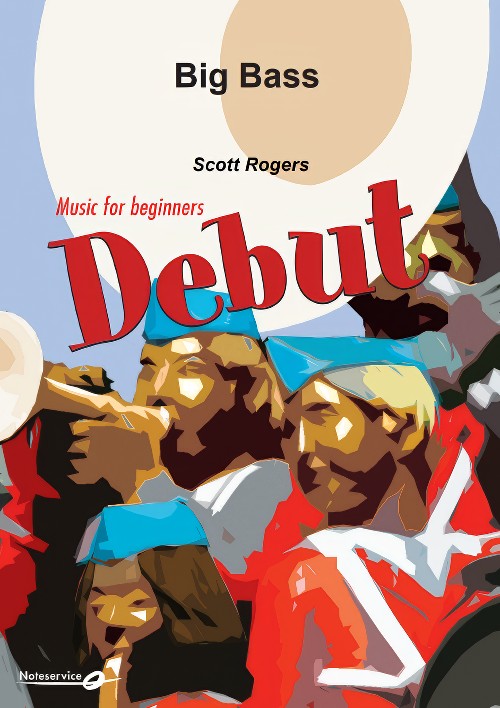 £56.60
£56.60Big Bass (Flexible Ensemble - Score and Parts) - Rogers, Scott
Every beginning low brass player deserves a big bassline. With a rhythmic focus on quarter- and eighth notes and a range of a fourth, this piece is easily accessible for all beginning low brass players and mastery breeds motivation, and that s something young musicians on trombone, baritone and tuba need. There is also a short chromatic motive that appears at B. This is written to lie well on the slide and valves and can be a good way to teach the important difference between concert E and Eb.Duration: 1.00
Estimated dispatch 7-14 working days
-
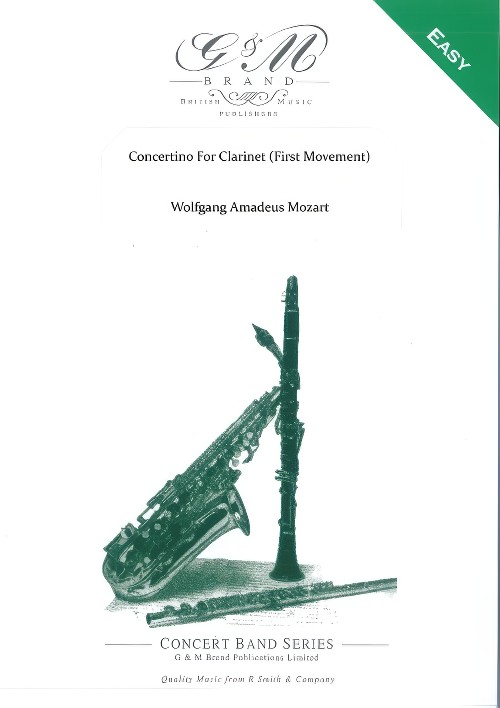 £44.95
£44.95Concertino For Clarinet (First Movement) (Concert Band - Score and Parts) - Mozart, Wolfgang Amadeus - Johnson, Stuart
Johnson, Stuart has arranged and adapted the first movement of this much loved Mozart piano sonata (KV 282) to create a delightful and welcome addition to the clarinet repertoire. The accompaniment is lightly scored for small wind band. Primarily this is to create a classical feel which reflects the style of the music. However, larger bands may wish to place the piece strategically in the program to give the heavy brass a rest. To this end, directors may also prefer to use single players on the brass and saxophone parts which would also help to give and orchestral feel to the performance.
Estimated dispatch 7-14 working days
-
 £8.95
£8.95Concertino For Clarinet (First Movement) (Concert Band - Score Only) - Mozart, Wolfgang Amadeus - Johnson, Stuart
Johnson, Stuart has arranged and adapted the first movement of this much loved Mozart piano sonata (KV 282) to create a delightful and welcome addition to the clarinet repertoire. The accompaniment is lightly scored for small wind band. Primarily this is to create a classical feel which reflects the style of the music. However, larger bands may wish to place the piece strategically in the program to give the heavy brass a rest. To this end, directors may also prefer to use single players on the brass and saxophone parts which would also help to give and orchestral feel to the performance.
Estimated dispatch 7-14 working days
-
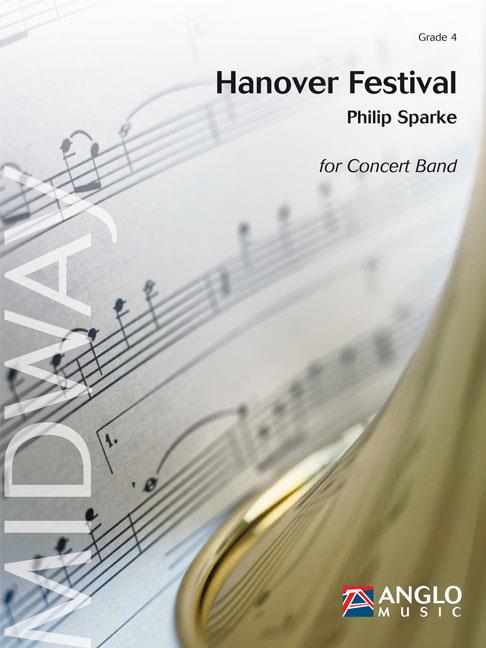 £137.99
£137.99Hanover Festival (Concert Band - Score and Parts) - Sparke, Philip
The Hanover Wind Symphony, New Jersey, USA was founded in 1984 by its conductor Peter Boor. He commissioned Hanover Festival to celebrate the band's 15th Birthday and the first performance took place on October 27th 1999. The piece starts with a solemn brass fanfare. Woodwinds join in and the music subsides into an expressive chorale. A climax is reached and the fanfare returns. Trumpets introduce an explosive vivo section, characterised by an energetic theme from the horns and low clarinets. A bridge passage with strong brass chords leads to a playful section that introduces a legato central theme under woodwind figures. This is taken up by the full band, the playful music returns and the original horn tune is reintroduced. Finally the opening fanfare returns, this time accompanied by music from the vivo section, until a fast and furious coda closes the work.Duration: 8:20
Estimated dispatch 7-14 working days
